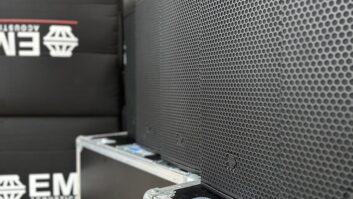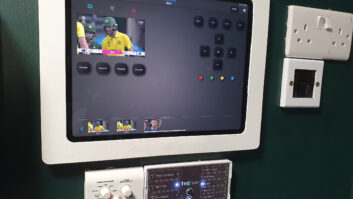On the wish list of many additions to a new home or a renovation project is the ability to listen to music around the house. Ian Trudgeon of thinkingbricks looks at what you need to know.
From background digital radio around the house, right through to a central digital music library, controlled from keypads in a number of rooms – multi-room music is gaining popularity.
There may be a single source, ie one audio choice across a number of rooms – an iPod in shuffle mode for example. More likely, it will be multi source: a number (normally 4-8) of audio choices available across the system.
Where is the music held and on what type of device?
The advent of the MP3 file and players such as the iPod now means that many people have their music stored as a file, in a folder, on a computer.
It has been the liberation of many a music collection – rekindling memories of the music we used to listen to and the favourite album we had forgotten we had. The portability of music has also increased, with a visit to the gym or a walk in the country now regularly accompanied by music.
In a modern multi-room music system, it is common to include an audio server as a source for the system. These “central libraries” can hold many thousands of songs, and can be updated with new music. By putting the disc into the machine, or dragging and dropping music from any PC into the server folder via a home network, music can be stored and selected easily.
A music server can also offer up to four different streams (outputs) simultaneously – which means that up to four people in four different rooms can play different songs, from the same single box.
What does “compression” mean?
The amount of storage required for a music collection is driven by the number of songs that need to be stored, and the quality of the recording at which they are stored. This quality of sound is linked to how the sound is compressed and is measured in kilobytes per sec. The higher the value, the higher the quality of the recording and the more space it will require on the audio server.
A normal CD will be recorded at 320KBps, whereas an iPod track will be recorded at 192KBps. Basically, you can store more iPod quality tracks on a hard drive.
How do you control these systems?
Many audio systems will be controlled via a keypad in the room. In a single source system, the keypad is simple – on/off, volume up and down. Modern multi-source systems will have a touchscreen – this helps when selecting the sources, as well as making finding the music easy and intuitive.
Keypads use either alphabetical indexes (artist A to Z, then albums A to Z for example) or can use movements of the finger across the screen to make selections or scroll through albums.
The keypad may include an infrared receiver, which means a remote control can be used to change the radio station preset, or skip a track on the iPod for example.
Where do the speakers go?
Key locations for speakers are in the ceiling or walls, recessed and with only a plain grille on show. This type of speaker is called “architectural”. Many are white, or can be painted to match the finish of the rest of the room.
Architectural speakers provide excellent performance from a very discrete product. In the case of home cinema rated in-wall speakers, the performance can match or exceed that of traditional floor-standing speakers.
As these speakers will require a large hole to be made in the ceiling/wall, manufacturers supply fire hoods or solid enclosures for their speakers, to ensure they comply with fire regulations.
In wet or external environments, there are weatherproof or IP rated speakers available.
Ian Trudgeon is project director with thinkingbricks. He is offering RIBA-certified CPD courses on all aspects of home technology.







